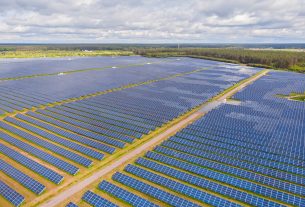
Our use and management of land is crucial for addressing the global challenge of climate change, both because it functions as a carbon sink that we need to strengthen and as a source of emissions that must be reduced. The EU 27’s net land sink declined by 35% between 2010 and 2021. On 15 May, the Commission published a new report, analysing the state of play of the implementation of the Land Use, Land Use Change and Forestry (LULUCF) Regulation. The report, as well as the recent EU-wide assessment of draft updated NECPs, found a gap of around -50 Mt CO2 eq in reaching the 2030 target at the EU level.
However, effective land policy offers a big potential to reduce emissions, increase removals, and ensure resilient and future-proof sinks by appropriate and swift action, such as rewetting peatlands, increasing soil carbon and manage our forests more sustainably.
With this in mind, a newly designed LULUCF Handbook has been published on 15 May to support Member States in the design and implementation of their land sector policies. An initiative commissioned jointly by the EEA and the European Commission’s Climate Action department has brought about a comprehensive guide specifically designed to:
- Explain all elements of the LULUCF Regulation, including reporting requirements and reporting principles. It does so by providing practical tips, examples, and case studies from Member States.
- Enable an increase in the quality of GHG emissions and removals in the LULUCF sector emission inventory data by making use of latest methodologies and monitoring data.
- Disseminate knowledge and experience on how GHG monitoring in the land sector can be improved to reflect the effects of policies and measures.
In parallel, the Commission will begin an evaluation process in 2024. The purpose of the evaluation is to assess the regulation against the “Better Regulation” principles such as its effectiveness, efficiency, and coherence with other land sector policies.
